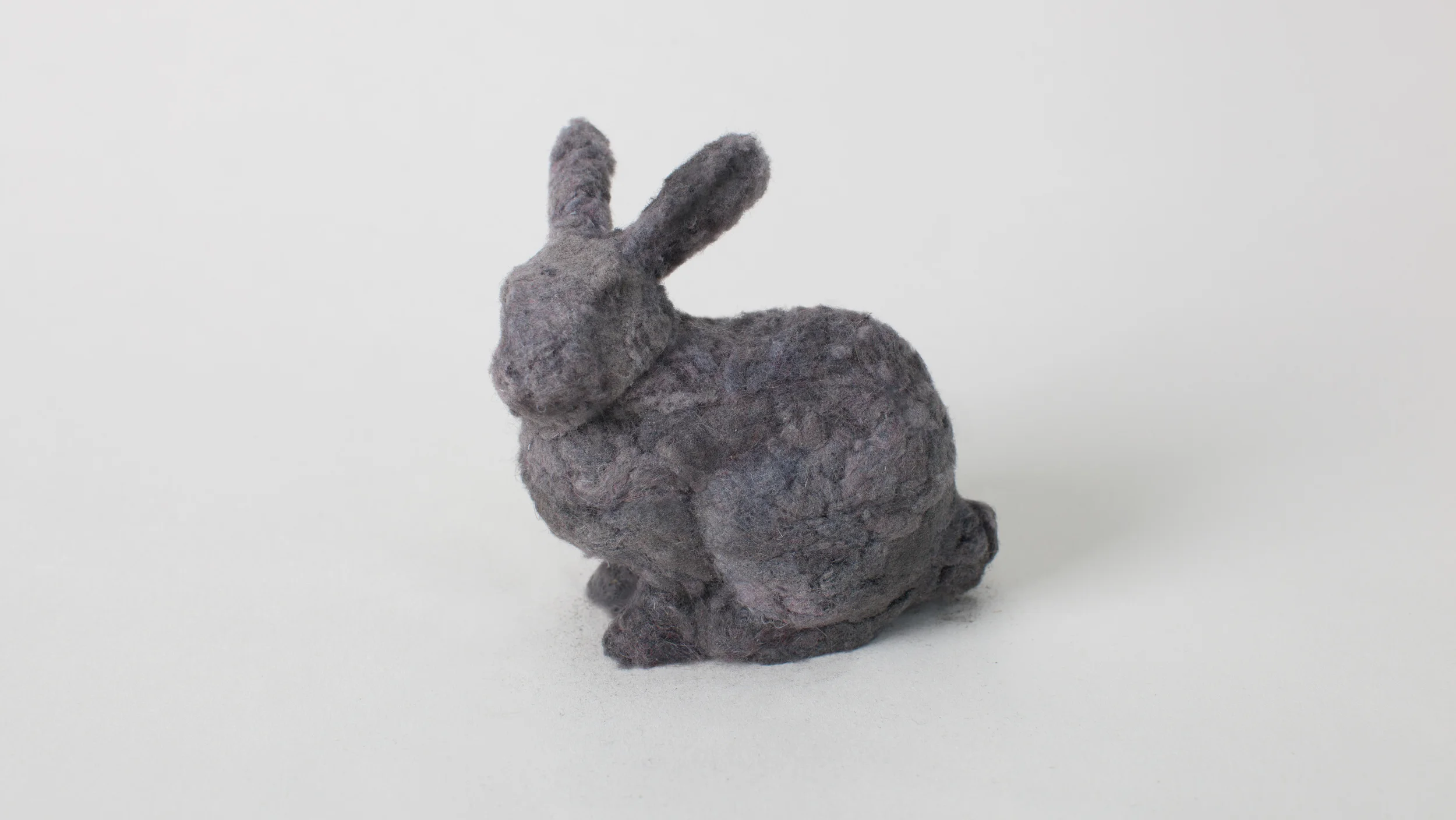Dust Bunny, 2015. Dust harvested from visual effects workstations. 7cm x 7cm x 5cm.
Dust Bunny is comprised of finely milled angora-like dust harvested from the inside of ten 3D animation workstations at visual effects studio Mainframe. The volume of dust here represents an estimated 35,000 hours, or 4 years, of constant rendering and processing. The sculpture meticulously renders in this industrial by-product the Stanford Bunny, the richly historic 3D test object introduced in early computer graphics experiments at Stanford University and still routinely used to demonstrate new advances in CGI.
Dust Bunny articulates a particular inversion that occurs between the real and the virtual: in the real world we seek to banish dust and dirt to optimise functionality, in CGI we labouriously reintroduce it at great cost – complex simulations, layered pseudo-random noise algorithms and intricately constructed 3D models seek to emulate the photographic, chaotic, infinitely dusty real world.
At the intersection of these two realities is the graphics workstation: a finely tuned monolith, vented by multiple fans spinning at up to 2000 RPM. These fans filter environmental dust into fine wads of light, delicate wool that can only be dislodged from their crevices with blasts of compressed air, soft brushes and carefully wielded tweezers. Often, the dust from the integrated fan on the GPU (graphics processing unit) fan is blacker than the rest, burnt from overclocking. Caught in precisely wrought vents it unspools - in surprising volumes - when plucked very carefully in a process almost physiological in nature.
This dust isn’t produced by the machine itself, it is biological, composed of skin, fine hair, atmospheric particles and fine cloth fibres. It is foreign and abject. In his 2011 book In the Dust Of This Planet, Eugene Thacker discusses how substances like oil, fog, mist, dust and dirt can be understood as forces that rupture the "world-for-us" and lets us glimpse a possible "world-without-us". These substances - almost literally earth itself - intercede as a horror in our anthropocentric worldview.
This world-for-us exists most perfectly in the digital, and in digital workspaces. It flourishes in the lab, the assembly line, the airtight, climate controlled anti static server room, the VFX facility and the render farm. These frictionless technical spaces are as spotless as the virtual spaces created by 3D software itself. Yet dust is always drawn inwards towards such spaces, coagulating around vents and grilles, encrusting the heavy-lifting CPUs and GPUs responsible for calculating fluid dynamics, high-speed collisions or armies of digital humans.
It takes armies of digitally integrated humans to prevent such accumulation. From the anti-static assembly line, to the purification of solder, the development of industrial water-cooling systems and the logistics of pan-continental VFX labour, all the way to the "render wrangler" whose job it is to ensure precarious renders don't crash and burn like so many skyscrapers in the latest superhero blockbuster. We're machine collaborators - we facilitate and protect the production of the virtual world-for-us, eradicating render artefacts, cleaning data sets, rotoscoping and removing noise, grain and glitch. And so it follows that must also eradicate ourselves - our very cells - from the apparatus. As much as we collaborate with the machine to eradicate dust and friction, we also collaborate with dust to introduce a kind of productive friction into the machine.
Alan Warburton, February 2015.

